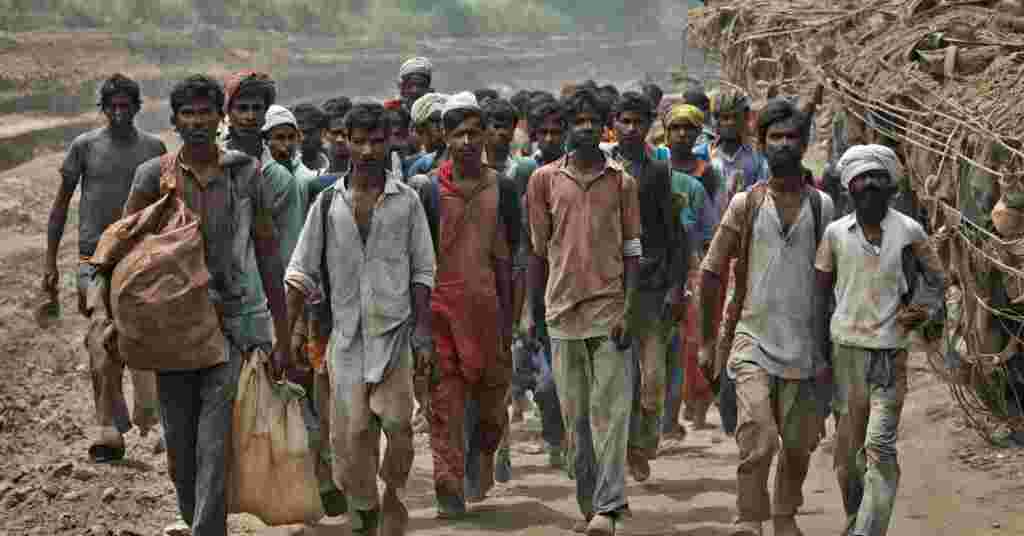In the ever-evolving landscape of global labour markets, temporary and migrant workers play an indispensable role in sectors ranging from construction and agriculture to hospitality and healthcare. However, despite their significant contributions, these workers frequently face unique challenges when it comes to workplace health and safety. The responsibility to ensure safe working conditions for all employees — regardless of their employment status or origin — is not only a moral obligation but also a legal requirement. Unfortunately, enforcing health and safety regulations for temporary and migrant workers remains an ongoing struggle across the UK and beyond.
Language and Communication Barriers
One of the most pressing challenges in ensuring safety for migrant workers is the language barrier. Many migrant workers may have limited proficiency in English, which can hinder their understanding of health and safety protocols, signage, training sessions, and emergency procedures. This communication gap can lead to misunderstandings, errors, and accidents that might have otherwise been preventable.
Temporary workers, even if fluent in English, may not receive adequate orientation or training due to the short-term nature of their employment. Employers sometimes assume that because these workers are on-site for limited periods, extensive training is unnecessary. This misconception can lead to tragic consequences, especially in high-risk industries like construction and manufacturing.
Lack of Training and Induction
Proper induction and ongoing safety training are critical in high-risk workplaces. Unfortunately, temporary and migrant workers often miss out on this essential step. They may be onboarded quickly to fill labour shortages, leaving little time for detailed safety training. Additionally, some employers may cut corners due to cost-saving measures or time constraints, assuming that short-term workers will pick things up on the job.
This is particularly concerning in areas with dense industrial activity, such as Health and Safety London, where complex urban worksites require stringent adherence to safety protocols. Inadequately trained workers can become both victims and contributors to hazardous conditions, compromising the safety of the entire team.
Precarious Employment and Fear of Retaliation
Another major hurdle lies in the precarious nature of temporary and migrant employment. Many workers in this demographic are employed through agencies or informal arrangements that offer little job security. This vulnerability often discourages them from reporting unsafe working conditions or injuries. They may fear job loss, retaliation, or even deportation, especially if they are undocumented or unclear about their employment rights.
Such fear fosters a culture of silence, where unsafe practices go unreported and unaddressed. This is particularly problematic in labour-intensive sectors like construction or agriculture, where risks are already high.
Inadequate Legal Protections and Oversight
While the UK has robust health and safety laws in place, enforcement is another matter altogether. Regulatory agencies are often under-resourced and may not be able to inspect all worksites regularly. Moreover, temporary and migrant workers may not be aware of their rights under UK law, particularly those related to health and safety.
Regions with high numbers of seasonal or migrant workers — such as Health and Safety Surrey and Health and Safety Kent — can find it difficult to maintain consistent oversight across dispersed worksites like farms and warehouses. Employers operating in rural areas or under the radar may neglect basic safety standards without consequence.
Cultural Differences and Attitudes Towards Safety
Cultural perceptions of workplace safety also play a role. Workers from countries where safety standards are less strictly enforced may not view PPE (Personal Protective Equipment), hazard reporting, or safety briefings as essential. As a result, they may unintentionally engage in unsafe behaviours or fail to understand the severity of certain workplace risks.
Employers must consider these cultural differences and adapt their training and communication strategies accordingly. Simply translating a safety manual is not enough; understanding how workers perceive and internalise safety practices is key to effective training.
Solutions and Path Forward
To address these challenges, a multi-faceted approach is needed:
-
Tailored Training and Communication
Employers should provide safety training in multiple languages and ensure that key messages are culturally appropriate. Visual aids, hands-on demonstrations, and multilingual signage can help bridge communication gaps. -
Stronger Legal Enforcement and Accountability
Regulatory bodies must be empowered with adequate resources to carry out inspections and enforce compliance. Penalties for non-compliance should be stringent enough to deter negligent employers. -
Worker Empowerment and Advocacy
Trade unions and advocacy groups can play a vital role in educating workers about their rights and offering support channels for reporting unsafe conditions. Ensuring anonymity and protection from retaliation is essential. -
Inclusive Safety Culture
Employers should foster a culture of inclusivity and safety that prioritises the well-being of every worker, regardless of their employment status. Temporary and migrant workers should feel confident that their safety concerns will be taken seriously. -
Collaborative Efforts
Governments, businesses, and NGOs must collaborate to create accessible resources and policies aimed at protecting vulnerable workers. Public awareness campaigns, employer incentives for best practices, and accessible legal support can significantly improve outcomes.
Conclusion
Temporary and migrant workers are the backbone of many essential industries, yet they remain disproportionately vulnerable to workplace hazards. Addressing the unique challenges they face requires more than just regulatory compliance; it demands empathy, proactive planning, and a commitment to equitable treatment. Whether in the urban bustle of Health and Safety in London, the suburban landscapes of Health and Safety in Surrey, or the rural farmlands of Health and Safety in Kent, creating safe and inclusive workplaces for all must remain a priority. Only then can we truly ensure a fair and sustainable workforce across the UK.




